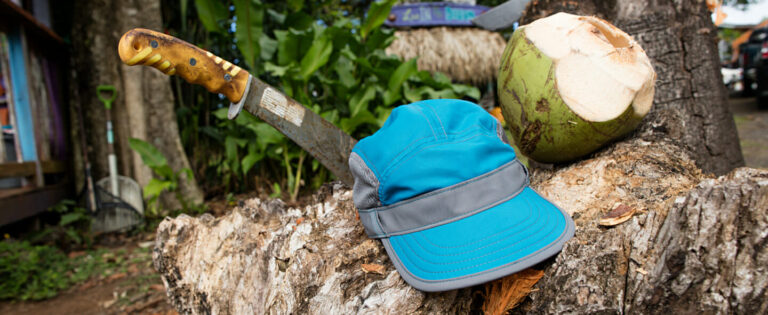If you’re thinking about running a half marathon and need to prepare, then you’ve come to the right place. The first thing you may ask yourself is: how long is a half marathon? A classic half marathon is 21.1 kilometres long. This distance is best suited for athletes who run on a regular basis. Another common question is: is a half marathon achievable for beginners? With the right preparation, it’s possible to successfully complete this demanding race. In this blog post, you will get many helpful tips on how to prepare for a half marathon.
Preparation is key

Some people decide to do a marathon or even an ultra marathon (anything longer than 42 km) as their first race. Others try to complete a half marathon without even training. This can be done, but something usually goes wrong. To successfully complete a half marathon and have fun doing so, you should be able to run for 60 minutes at a time. Some amateur runners run a few 10K races beforehand, but this is not necessary.
Doing a half marathon in the city is different to doing one on trails or forest paths due to the terrain you’re running on. Once you select which marathon you would like to participate in, you should train daily on the appropriate surface to get used to the different requirements of the terrain.
Types of training
How do I prepare for a half marathon? Ideally, you should go for a run four times a week. Some people prefer a fixed training plan, whereas others prefer to rely on their experience or feeling.
An important goal when you’re training is to get used to your target competition pace. Here are different types of workouts to provide the body with new training stimuli:
- Easy run: run at your „feel-good“ pace for approximately 30 to 60 minutes.
- Speed play: vary your speed during training. You can run fast for 60 seconds and then bring down the tempo for the next 60 seconds. Set yourself spontaneous, small goals along the way, for example, sprinting to the next tree or park bench).
- Progressive endurance run: start off at an easy pace and gradually increase your speed. For example: easy pace for 2 km, increase your speed for the next 2 km, run at competition pace for the next 3 km, then run a 1 km cool down
- Speed endurance run: 10-15 minutes easy running, then run continuously close to your planned competition pace. Ideally, you would divide your energy so that the second half is faster than the first.
- Tempo run: 10-15 minutes of easy running. Then, depending on your ability and fitness level, repeat the run for a distance between 300 and 1,000 m followed by a two to three-minute trot break.
The ideal training plan for beginners

So, how do I prepare for a half marathon? In general, a training plan is recommended for inexperienced runners. This 10-week half marathon training plan (only available in German) can help you prepare.
What is a good half marathon time? That is difficult to say. Every person starts off with a different fitness level. Some people have already completed a 10 km run and already have a time in mind that they would like to achieve during their next long-distance run.
Other runners have never run a race before, so they may have no idea what they can manage. If this is your first half marathon, you don’t need to focus too much on time. After you’re done with your first race, you can approach the next race with a target time in mind and optimise your training.
The right equipment and practical tools
If you’ve been running three to four times a week, you probably already have running clothes for good and bad weather conditions. Having good running shoes is also very important. Ideally, you should have at least two pairs of running shoes at home.
Technical running apparel (shorts and trousers, short and long-sleeved tops, a jacket, and base layers) are essential basics for the race. Every new piece of equipment should be tried out when you’re still training. Nothing is worse than noticing after you started the race that your new running trousers chafe or your socks keep sliding down.
Multifunctional watches with GPS technology help you to keep track of time, distance and speed during your run. The recorded data can be evaluated after the training session to get a detailed analysis of your training session.
Nutrition during the competition
The event organisers often provide drinks and small snacks at regular intervals (usually every 3 to 5 km) along the route. Normally there is water, an isotonic sports drink, bananas or oranges. Occasionally, energy gels or energy bars are also offered.

If you’ve been eating well the days leading up to the big day, you don’t necessarily need to eat during the race. A few bites of a banana, an isotonic drink or a small energy bar won’t hurt during the run. They can actually help to replenish your energy reserves.
- When you’re training, test out what you can and can’t eat
- Drink when you’re thirsty
- If it’s hot out, isotonic drinks can help. Plus, you can pour the cups of water you get at the event over your head for a quick cool down
- If you want to carry a drink with you, use a running belt with a small water bottle
- Check the organiser’s website to find out what they offer at the refreshment points
You should eat balanced and wholesome meals when training for a half marathon. A healthy diet contributes significantly to fitness and performance.
Regeneration
You will often see the term „tapering“ in training plans. This is a phase during training that includes taking it easy the week leading up to the half marathon. This helps maintain your performance.
Beginners should take a slightly longer break. Plenty of sleep, a balanced diet and relaxation provide additional energy reserves to successfully complete your first half marathon. If you are well rested at the start, you will have much more fun running!
After your first half marathon, you should take a few days off from your regular running training plan. Listen to your body, rest and enjoy your success. When the soreness is gone, you can return to your regular training schedule full of motivation.




